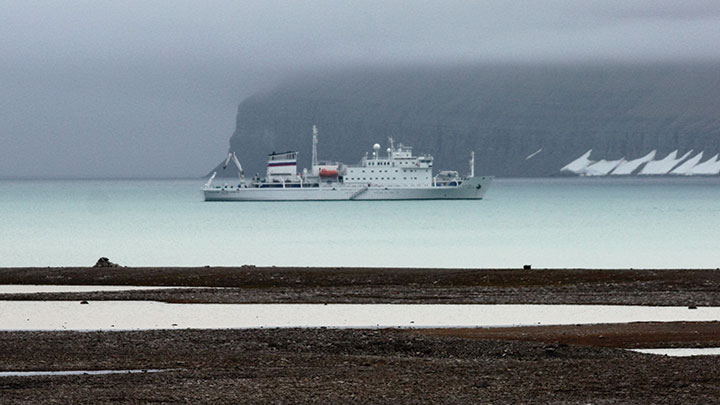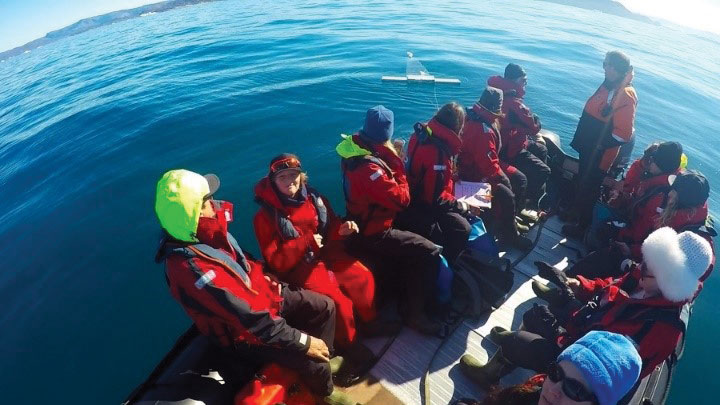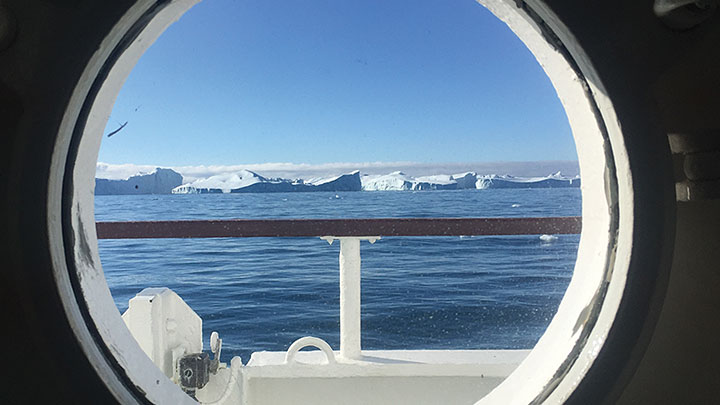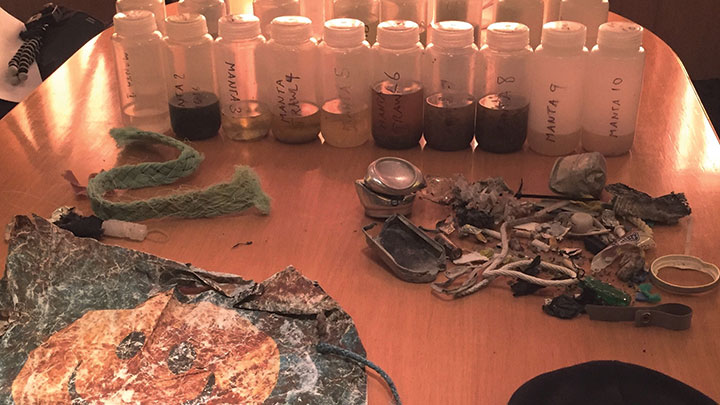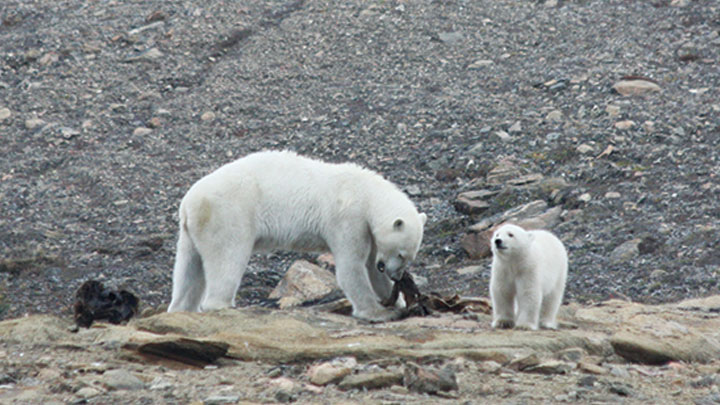Current Features
Arctic Mission
By Penny Carnathan '82
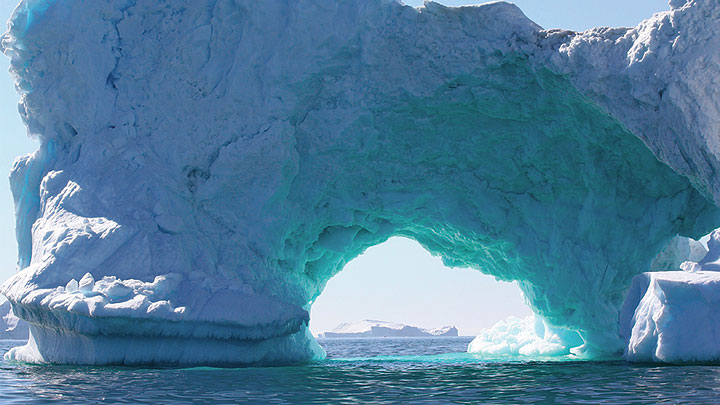
Sherri Swanson, MA Global Sustainability '14, recently joined a 5 Gyres Institute Arctic Expedition aboard the Akademik Sergey Vavilov, a Russian research vessel that journeyed from Kangerlussuaq, Greenland, to Nunavut, Canada. Swanson and her fellow crewmates sampled the Arctic waters for microplastics and man-made synthetic fibers to get a better understanding of the extent of plastic pollution circulating around the Arctic Circle.
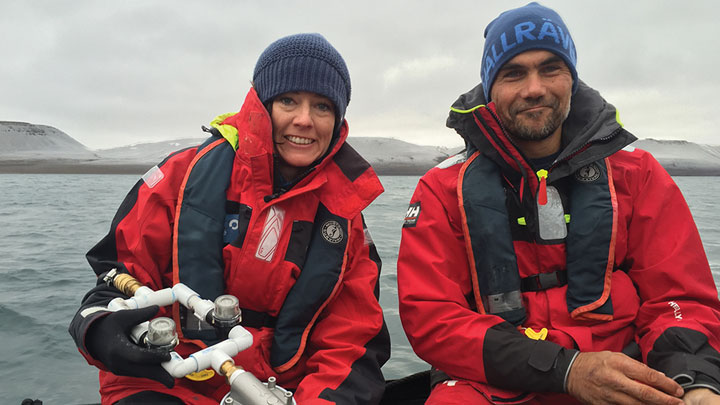
The 5 Gyres Institute, a California-based nonprofit, was founded in 2008 to address plastic pollution through research and education and draw awareness to the problems with single-use plastics. Its successful campaign against microbeads, tiny plastic beads in some toothpastes, soaps and personal care products, resulted in President Obama signing the Microbead-Free Waters Act in 2015.
The mission for the two-week, 1,687-mile Arctic Expedition was to sample the waters above the Arctic Circle to learn how much plastic has reached this remote region of the world, which already experiences problems associated with the effects of global climate change. The 5 Gyres crew included 22 citizen scientists. The team used several survey techniques, including surface observations from the ship, pedestrian surveys along the shore, trawling behind small, inflatable boats, and water filtration using a plankton-collection methodology. They trawled the waters along the western coast of Greenland and in harbors and bays along the Lancaster Polynya, a winter refuge for wildlife including polar bears and narwhal and beluga whales.
The data collected will be processed by oceanographers at Louisiana State University and will be used to better understand the distribution of microplastics across the North Atlantic Gyre, one of the world's five major gyres, or ocean current systems. It will also be used to recalibrate the 5 Gyres ocean model that estimates the global concentration of plastic pollution in the oceans.
Plastic – in its many forms – has become a major source of ocean pollution. It includes discarded fishing debris, land-based garbage, shoreline litter, and synthetic clothing fibers that pass through washing machines and sewage systems. It was estimated in 2014 that the planet's oceans contained more than 270,000 tons of plastics (5.25 trillion pieces), which threaten both wildlife and humans. Plastics contain hazardous chemical components and absorb additional pollutants from the environment. When ingested by zooplankton, tiny organisms that live in our oceans, those toxins are passed up the food chain by the animals that eat them – fish eat plankton, fish eat fish, humans eat fish.
The trip was the 17th expedition by the 5 Gyres Institute. Swanson, an environmental scientist, joined as an unpaid volunteer to support the 5 Gyres Institute's mission to bring awareness of the problems with plastic pollution through science, art, education and adventure. To learn more about the institute or to get involved with the work it does, visit www.5gyres.org.
